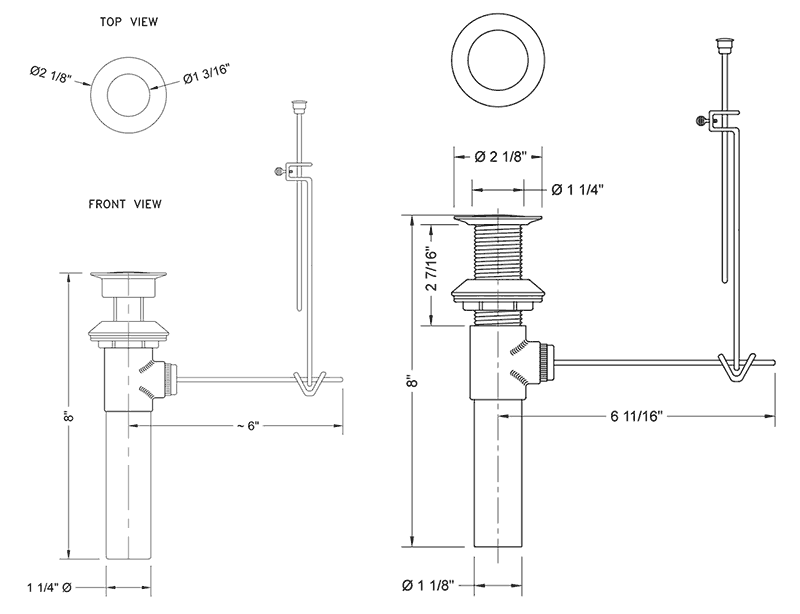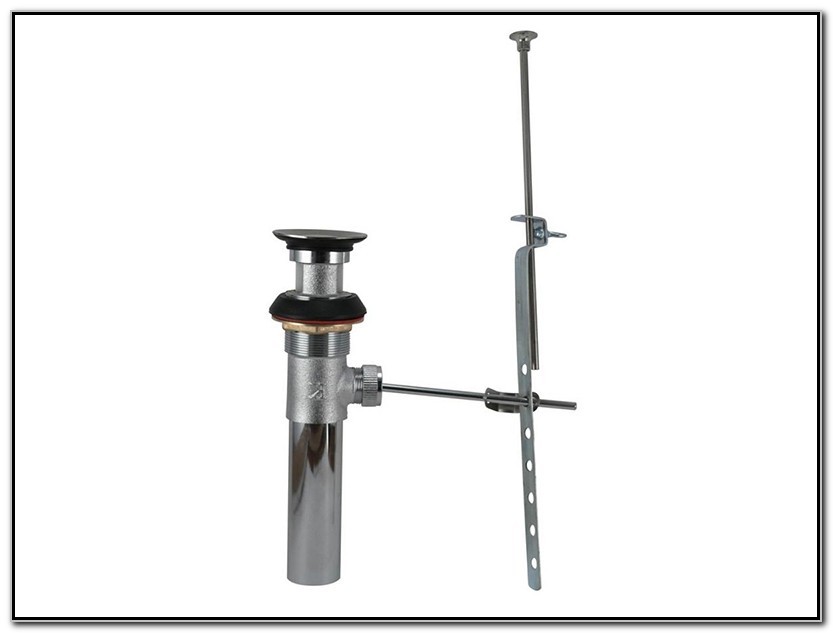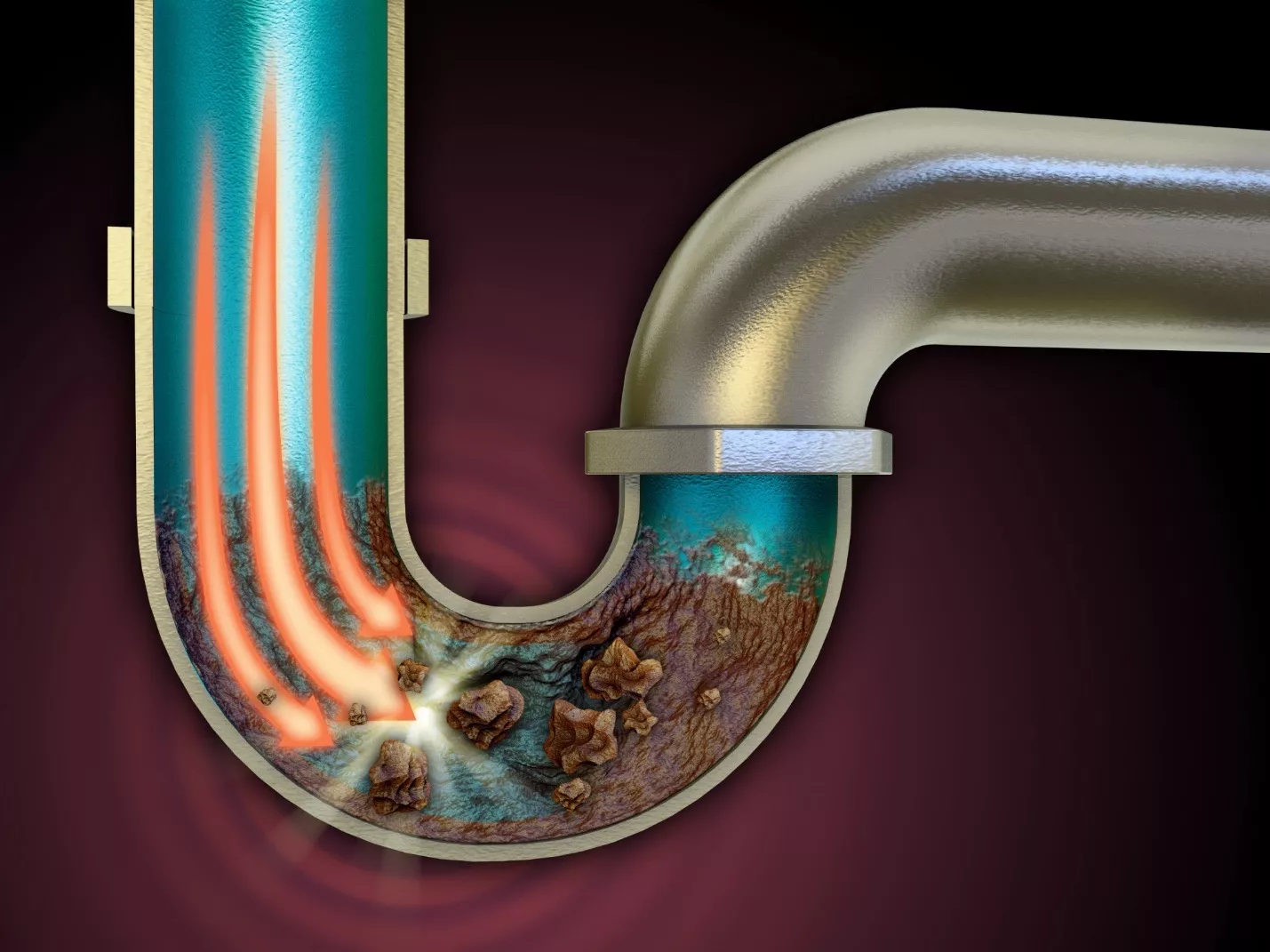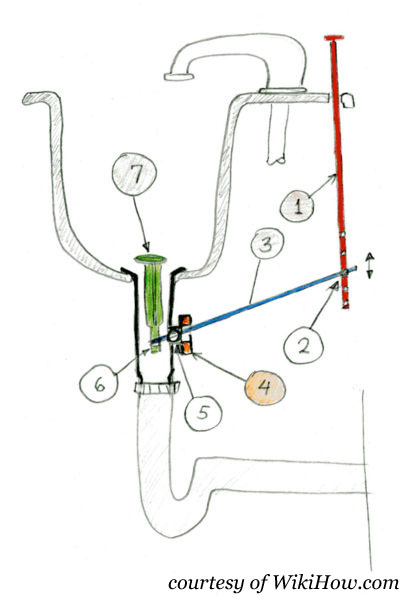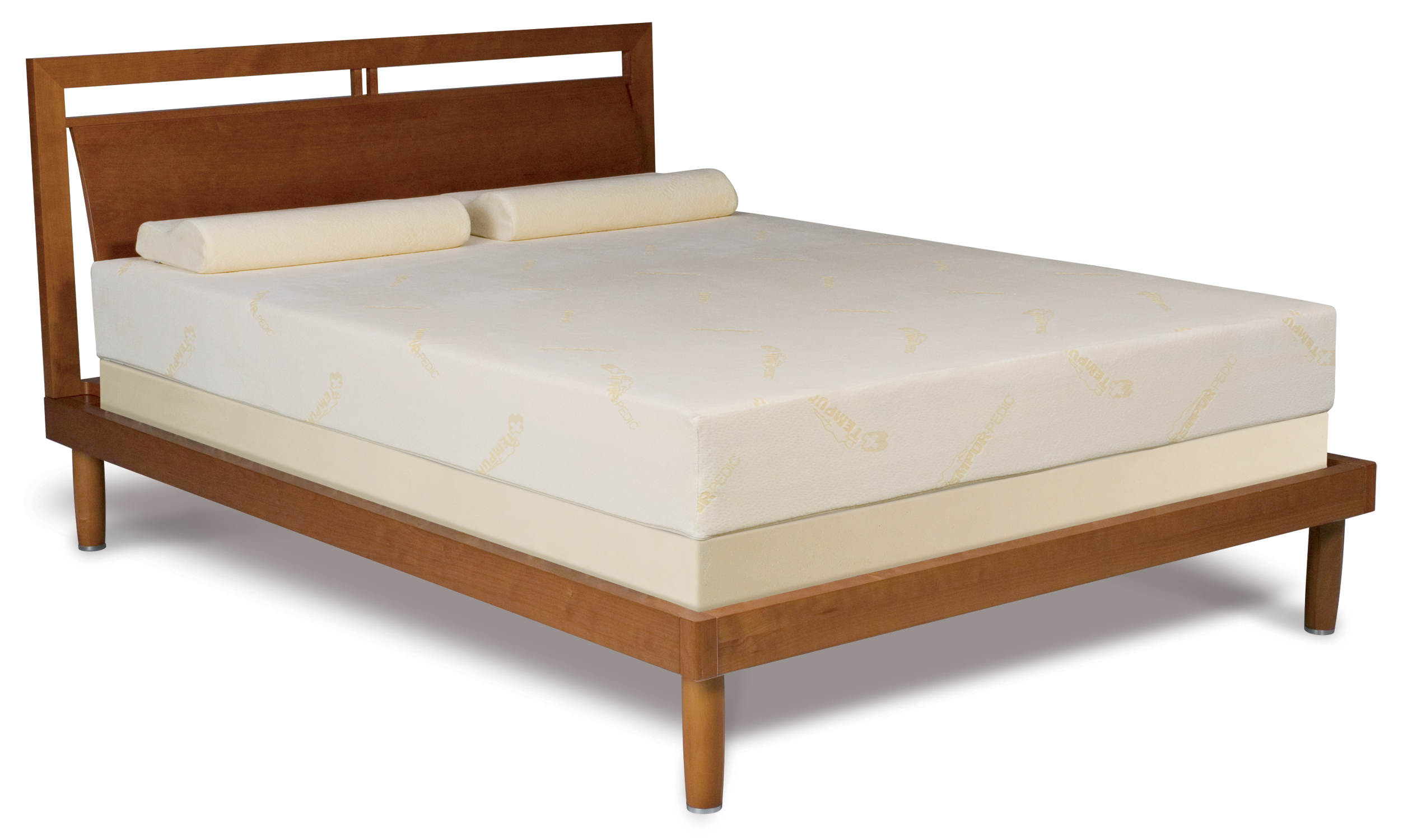When it comes to designing your bathroom, one of the most important decisions you'll make is choosing the right sink and drain combination. Not only do they serve a functional purpose, but they also add to the overall aesthetic of the space. With so many options available, it can be overwhelming to decide on the perfect combination for your bathroom. In this article, we'll explore the top 10 main bathroom sink and drain options to help you make the best choice for your space. Bathroom Sink and Drain: Choosing the Perfect Combination
Before we dive into the top 10 options, it's important to understand the basic parts that make up a bathroom sink drain. These include the drain flange, drain body, P-trap, tailpiece, and stopper. The drain flange is the visible part of the drain that sits on top of the sink. The drain body is the part that sits underneath the sink and connects to the P-trap. The P-trap is a curved pipe that prevents sewer gases from entering your bathroom. The tailpiece is the straight pipe that connects the drain to the P-trap. And finally, the stopper is the mechanism that opens and closes the drain. Bathroom Sink Drain Parts: Understanding the Basics
Now that we have a basic understanding of the parts that make up a bathroom sink drain, let's talk about how they all come together. The drain assembly typically consists of the drain flange, drain body, P-trap, and tailpiece. The stopper is usually sold separately and can be chosen based on your personal preference. When installing a new sink and drain, it's important to make sure all the parts are compatible and fit together properly. Bathroom Sink Drain Assembly: Putting It All Together
As mentioned earlier, the stopper is the mechanism that opens and closes the drain. There are various types of stoppers available, including push-pull, pop-up, and lift-and-turn. Each has its own unique function and style, so it's important to choose one that fits your needs and preferences. Some stoppers also come in different finishes, such as chrome or brushed nickel, to match the rest of your bathroom fixtures. Bathroom Sink Drain Stopper: Function and Style
Over time, bathroom sink drains can become worn out or damaged, leading to leaks or clogs. If you notice any issues with your sink drain, it may be time to consider a replacement. When choosing a replacement, make sure to take measurements of your current drain to ensure the new one will fit properly. It's also a good idea to consult a professional plumber for installation, especially if you're not familiar with plumbing work. Bathroom Sink Drain Replacement: When to Consider It
The drain pipe is an important part of the drain assembly, as it connects the drain to the P-trap. Drain pipes can be made of different materials, including PVC, copper, and brass. The size of the pipe is also important and will depend on the size of your sink and the distance between the drain and P-trap. It's best to consult a professional plumber when choosing the right drain pipe for your sink. Bathroom Sink Drain Pipe: Materials and Sizes
Clogged bathroom sink drains are a common issue that can be caused by a variety of factors, including hair, soap scum, and toothpaste buildup. To prevent clogs, it's important to regularly clean your drain and avoid putting anything down it that could cause blockages. If you do experience a clog, there are various solutions available, such as using a plunger or drain snake, or using a chemical drain cleaner. Bathroom Sink Drain Clogged: Prevention and Solutions
When it comes to installing a new sink and drain, you may be wondering if it's a project you can tackle yourself or if you should hire a professional plumber. While some may feel confident in their DIY skills, it's important to note that improper installation can lead to leaks and other issues down the line. If you're not experienced in plumbing work, it's best to leave it to the professionals to ensure a proper and long-lasting installation. Bathroom Sink Drain Installation: DIY or Professional?
A leaky bathroom sink drain can be a nuisance and also lead to water damage if left unattended. Signs of a leaky drain include water pooling around the sink, a musty smell, and visible damage to the cabinet or walls underneath the sink. If you notice any of these signs, it's important to address the issue as soon as possible. Depending on the cause of the leak, solutions may include tightening loose connections, replacing damaged parts, or calling in a professional plumber for repairs. Bathroom Sink Drain Leak: Signs and Solutions
Last but not least, let's talk about the drain flange. This is the visible part of the drain that sits on top of the sink and adds a finishing touch to the overall look of your bathroom. Drain flanges come in various shapes, sizes, and finishes, so you can choose one that complements your sink and other bathroom fixtures. Some even come with decorative designs to add a touch of personality to your space. In conclusion, when it comes to choosing the perfect bathroom sink and drain combination, it's important to consider both function and style. With the top 10 main options listed in this article, you're sure to find the perfect match for your bathroom. Remember to properly install and maintain your sink and drain to ensure they last for years to come. Bathroom Sink Drain Flange: A Finishing Touch
Maximizing Space with a Bathroom Sink and Drain

Efficient Design for Small Bathrooms
 When it comes to designing a small bathroom, every inch of space is valuable. This is where choosing the right bathroom sink and drain can make a huge difference. Not only do they serve a functional purpose, but they can also add style and personality to your bathroom. By carefully considering the design and placement of your sink and drain, you can maximize the space in your bathroom and create a functional and visually appealing environment.
Bathroom Sink Options
When it comes to choosing a bathroom sink, there are a variety of options available. The most common types are pedestal, wall-mounted, and vanity sinks. Pedestal sinks are a great choice for smaller bathrooms as they take up minimal space and create a sleek, modern look. Wall-mounted sinks are another space-saving option that can give the illusion of a larger bathroom. Vanity sinks, while larger, offer storage space underneath and can also add a touch of elegance to your bathroom design.
Space-Saving Drain Solutions
In addition to the sink itself, the drain is also an important consideration in small bathroom design. Traditional drains can take up valuable space and may not always blend in with the overall aesthetic of your bathroom. Luckily, there are now space-saving options available such as pop-up drains and linear drains. These types of drains are installed directly into the sink or shower floor, freeing up space and creating a seamless look.
Maximizing Functionality
When choosing a bathroom sink and drain, it's important to consider their functionality in addition to their design. In a small bathroom, it's important to choose a sink that has enough counter space for daily tasks such as brushing your teeth or applying makeup. A wall-mounted or vanity sink with storage space can also help declutter your bathroom and keep essential items within reach. Additionally, choosing a drain with a stopper mechanism can prevent clogs and make cleaning more efficient.
When it comes to designing a small bathroom, every inch of space is valuable. This is where choosing the right bathroom sink and drain can make a huge difference. Not only do they serve a functional purpose, but they can also add style and personality to your bathroom. By carefully considering the design and placement of your sink and drain, you can maximize the space in your bathroom and create a functional and visually appealing environment.
Bathroom Sink Options
When it comes to choosing a bathroom sink, there are a variety of options available. The most common types are pedestal, wall-mounted, and vanity sinks. Pedestal sinks are a great choice for smaller bathrooms as they take up minimal space and create a sleek, modern look. Wall-mounted sinks are another space-saving option that can give the illusion of a larger bathroom. Vanity sinks, while larger, offer storage space underneath and can also add a touch of elegance to your bathroom design.
Space-Saving Drain Solutions
In addition to the sink itself, the drain is also an important consideration in small bathroom design. Traditional drains can take up valuable space and may not always blend in with the overall aesthetic of your bathroom. Luckily, there are now space-saving options available such as pop-up drains and linear drains. These types of drains are installed directly into the sink or shower floor, freeing up space and creating a seamless look.
Maximizing Functionality
When choosing a bathroom sink and drain, it's important to consider their functionality in addition to their design. In a small bathroom, it's important to choose a sink that has enough counter space for daily tasks such as brushing your teeth or applying makeup. A wall-mounted or vanity sink with storage space can also help declutter your bathroom and keep essential items within reach. Additionally, choosing a drain with a stopper mechanism can prevent clogs and make cleaning more efficient.
Incorporating Design Elements
 Aside from their functional purposes, bathroom sinks and drains can also add a touch of design to your bathroom. Choosing a sink and drain that complements the overall style of your bathroom can create a cohesive and visually appealing space. For a modern and minimalist look, opt for a sleek and simple sink with a linear drain. If you prefer a more traditional style, a pedestal sink with a classic round drain may be the perfect fit.
Final Thoughts
In conclusion, a well-designed bathroom sink and drain can make a big impact in a small space. By carefully considering the available options and incorporating design elements, you can create a functional and stylish bathroom that maximizes every inch of space. So when it comes time to renovate or update your bathroom, don't overlook the importance of choosing the right sink and drain. Your small bathroom will thank you.
Aside from their functional purposes, bathroom sinks and drains can also add a touch of design to your bathroom. Choosing a sink and drain that complements the overall style of your bathroom can create a cohesive and visually appealing space. For a modern and minimalist look, opt for a sleek and simple sink with a linear drain. If you prefer a more traditional style, a pedestal sink with a classic round drain may be the perfect fit.
Final Thoughts
In conclusion, a well-designed bathroom sink and drain can make a big impact in a small space. By carefully considering the available options and incorporating design elements, you can create a functional and stylish bathroom that maximizes every inch of space. So when it comes time to renovate or update your bathroom, don't overlook the importance of choosing the right sink and drain. Your small bathroom will thank you.




/bathroom-sink-drain-installation-2718843-03-6fee5b9d9f7d475abfe06a95ddb1f695.jpg)


